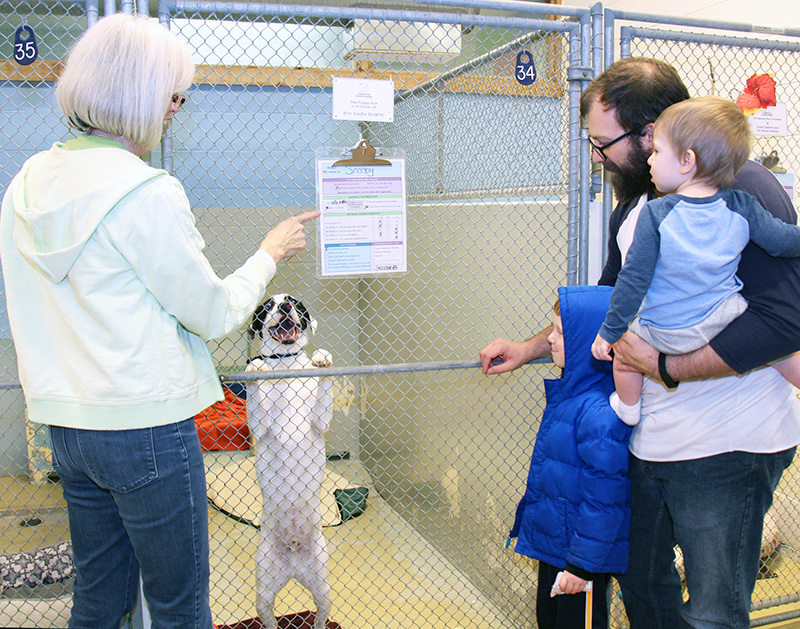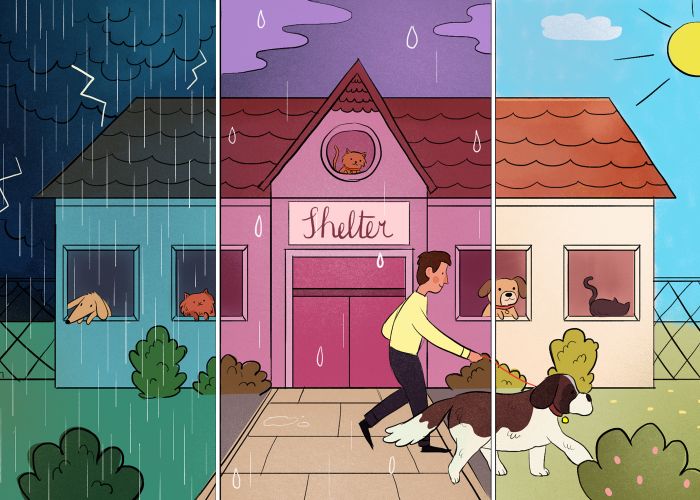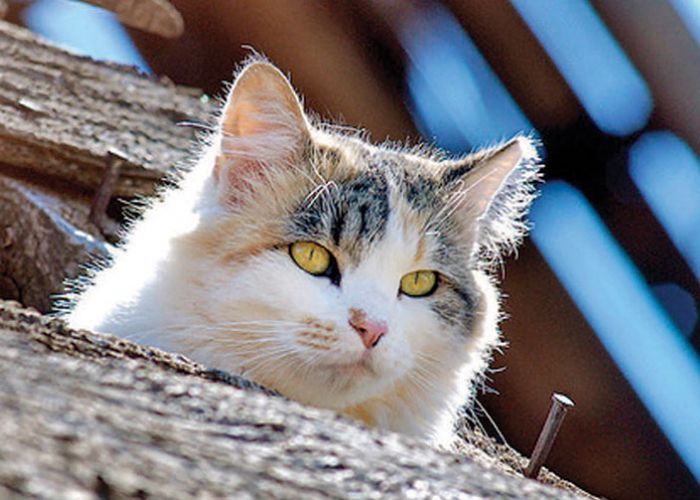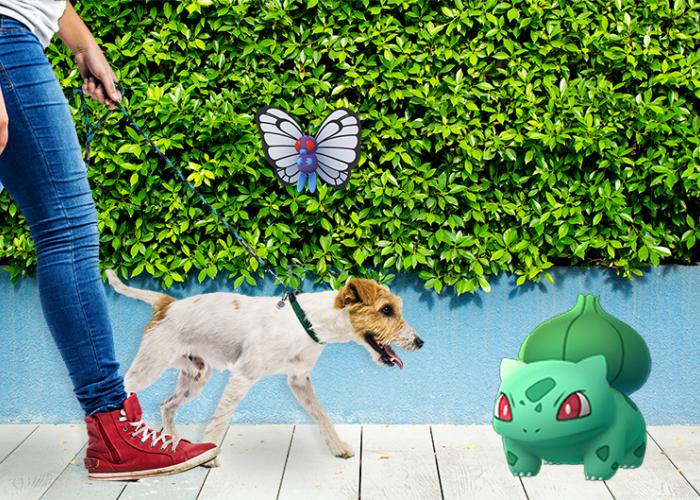No more guessing games
By nixing breed labels, shelters let dogs shine on their individual merits
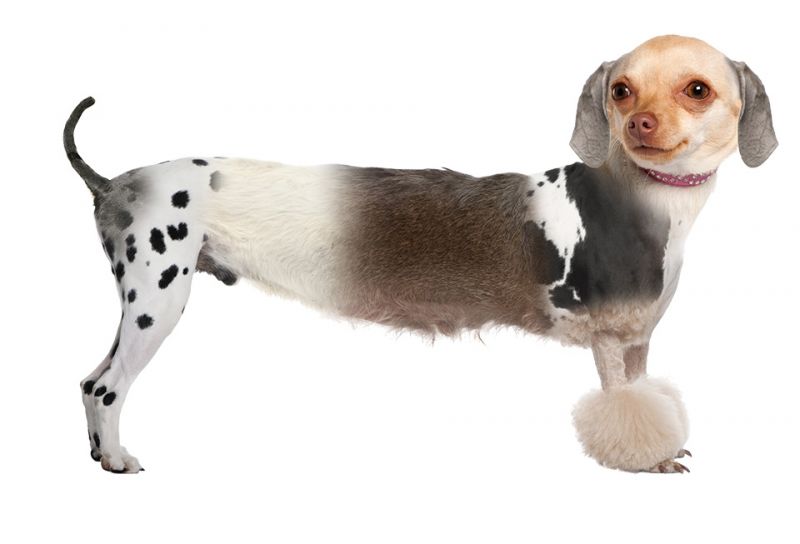
Let’s say you’re in the market for a new dog. According to one online quiz, the best breeds for your lifestyle include the German shepherd, bloodhound, Great Dane, dalmatian and pointer. Answer a similar set of questions in another quiz, and it points you to the pug, Sussex spaniel and French bulldog. A third determines you’re more of a dachshund or Afghan hound or Irish wolf hound-type person.
You’re not exactly homing in on your future companion. But judging from the long list of Google results generated from the question “what dog breed is right for me,” people want help on choosing a dog, and there’s a widespread assumption that breed determines a dog’s personality. The dachshund has an “alert and active nature,” one online quiz states, while pugs “have a great sense of humor and like to show off.” The dalmatian is “stable and outgoing; dignified but never shy,” and the Great Dane is “friendly, patient and dependable.”
Adding a new dog to your family is a big moment. It’s understandable that people seek guidance. But is breed a reliable guidepost for choosing the right dog?
Not really, says Janis Bradley, a veteran dog trainer and researcher with the National Canine Research Council (NCRC). In her paper “The Relevance of Breed in Selecting a Companion Dog,” Bradley explains that most recognized dog breeds today have only existed since the late 1800s, not the multiple centuries most people assume. While genetics can certainly influence behavior, she writes, dogs today are primarily bred for appearance, not temperament and not for the working roles the breed may have occupied in the past. As a result, dogs within a breed will exhibit about as much variability in their personalities as dogs across all breeds demonstrate.
So there will be Labs who are afraid of water, greyhounds who aren’t motivated to chase a lure, and golden retrievers who are nervous around kids. While certain body types are better suited to certain activities—say, providing protection to a law enforcement officer or running long distances—in the end, Bradley writes, a dog’s personality is determined by a complex mix of genetics, training and life experiences.
Yet the idea that breed governs temperament and behavior is deeply ingrained in our culture. Kristen Auerbach, deputy chief animal services officer at the Austin Animal Center in Texas, recalls the time she overheard a staff member stating that Australian cattle dogs have to be working dogs and can’t be adopted as pets.
“She was telling a potential adopter this,” Auerbach says. “And it was totally not true.”
Breed stereotypes are even more problematic in a shelter setting. Since few dogs show up with their pedigree papers, most shelters and rescues simply label them by the breeds they most resemble, and people tend to make assumptions about the dogs’ personalities and future behavior based on these guesses.
Now, recent studies are calling into question much of what we thought we knew about dogs and breeds. And they’re generating a new conversation in the animal welfare field: Is our breed-labeling habit doing a disservice to dogs and adopters?
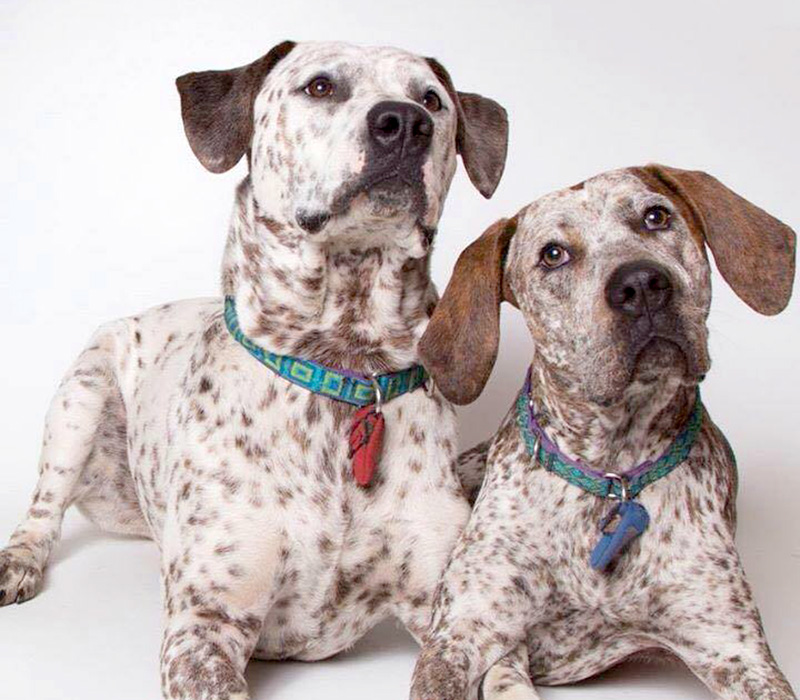
Let the mystery be
To answer that question, Stacey Coleman, executive director of Animal Farm Foundation (AFF) and the NCRC, describes an encounter she had a few years ago at her local animal shelter.
In the kennel area, she met a young woman who was trying to choose her first dog. The woman explained that because her father was a bit afraid of dogs, she needed to make sure she adopted a friendly one.
She pointed to a dog labeled a Lab mix. Coleman peered into the kennel and saw a black mixed breed cowering in the back. One kennel over, a brindle-colored dog was begging for attention, “doing the little hula dance, his tail going a hundred miles an hour.” Coleman tried to steer the young woman toward him. “She said, ‘No, that’s a pit bull. I can’t take that dog home. I know Labradors are friendly, and I want my dad to have a friendly dog.’”
This is the power of breed stereotypes: The young woman was so convinced that Labs are friendly—and pit bulls are not—that she ignored the evidence of her own eyes.
But there’s another issue at play here: The woman was basing her decision on breed guesses that in all likelihood were incorrect.
Coleman started volunteering with animal shelters in the 1990s, and it wasn’t long before she started questioning the accuracy of visual breed identification. Dogs labeled shepherd mixes didn’t resemble each other, and the same was true for dogs dubbed Lab mixes or pit-bull mixes.
“I could look at the dogs, and it occurred to me that they were likely not even from the same gene pool,” she says. “I realized how arbitrary breed labels are.”
She wasn’t the only one to recognize the problem. Some believed the solution lay in teaching shelter staff about various breeds so they could improve the accuracy of their guesses. But then canine DNA testing came onto the market, followed by studies that confirmed what many people had long suspected: Visual breed identification is most often wrong, even when performed by veterinarians or other canine experts.
That’s because a minute percentage of a dog’s genes determine his morphology (physical appearance). A dog who is a cross of several breeds can look a lot like a purebred ancestor, while conversely, even first-generation crosses of two different purebreds may bear no resemblance to either parent (or their siblings). Meanwhile, a purebred from a puppy mill or backyard breeder may look different enough from the breed standard to be dubbed a mix.
One study found that for 90 percent of dogs, breed guesses by adoption agencies didn’t match the predominant breed identified through DNA analysis. Another revealed that experts seldom agree on their breed guesses, so one person’s bulldog mix is another’s boxer mix and another’s Lab-hound cross.
But when a shelter puts a breed guess on a kennel card, people tend to accept it as fact.
And that’s a problem, says Coleman. “For organizations that are still guessing at breed labels, I think sooner rather than later, they’re going to realize that they’re making false assurances to adopters. Now that we know visual breed ID isn’t accurate … the most honest answer is, ‘I don’t know.’”
Will the real pit bulls please line up?
The consequences of breed labeling fall hardest on dogs identified as a stigmatized breed—which today most often means pit bulls, says Cory Smith, HSUS director of companion animal public policy.
The pit bull has always presented a unique challenge when it comes to visual breed identification. While a purebred rottweiler, for example, comes from a closed gene pool and has a distinctive look, “pit bull” is a term applied to dogs of several breeds, and there’s no universal definition of which breeds fall into this category.
When Smith worked as an animal control officer in Washington, D.C., “every day we took in a lot of dogs who looked very different but kind of got lumped in this category of ‘pit bulls,’” she says. This was in the 1990s, and her shelter, like many others at the time, had a no-adopt policy for dogs deemed pit bulls, so the label was tantamount to a death sentence.
Attitudes about pit bull-types have since shifted dramatically within the sheltering field. Nearly all shelters recognize that dogs should be judged as individuals, and scientific studies have debunked the notion that any breed or type of dog is inherently aggressive. But the stigma still lingers in public attitudes, municipal breed bans and housing restrictions.
Given the high stakes, much of the recent research on visual breed identification has focused on dogs called pit bulls. And it’s uncovered another truth about shelter dogs: Few of them are first-generation crosses of two purebreds.
“We’re several generations away from that now,” says Smith. “So many shelter dogs and owned dogs in the U.S. are just these medium-sized, short-haired dogs that are so mixed that no one will ever quite know what breeds they’re comprised of, and those dogs just so often get called pit bulls or pit-bull mix. If you line them up, what do they all have in common? There’s more difference than there is similarity.”
One study revealed that shelter staff labeled twice as many dogs as pit bulls than were actually identified (through DNA testing) as a breed under the “pit bull” umbrella. Another showed that even for dogs confirmed as pit bull-types—for example, those whose DNA revealed an American pit bull or Staffordshire terrier in his ancestry—no single breed accounted for more than 30 percent of the dog’s total genetic makeup.
“Right now, shelters are saying, ‘We have a lot of pit bull dogs,’” Coleman says. “What we explain to them is, ‘Look at how arbitrarily you’re using this label.’”
A “pit bull,” science is showing, is most often simply a mutt.
Clearing the blind spots
So why are shelters guessing at breeds in the first place? For starters, Auerbach says, until recently “people really were convinced that … they could look at a dog and they could tell you what it was.”
Breed labels are also seen as a way to guide people to dogs who match their mental picture of an attractive animal, whether it’s floppy ears, an elongated snout, or a certain size, color or coat length.
“We’re trying to help people find what they’re looking for, morphologically,” says Lisa Gunter, a behaviorist and research assistant in the psychology department at Arizona State University.
But as it turns out, labels act less as guides and more as blinders.
In a study published last year in PLOS One, Gunter and a team of researchers found that people rated dogs who were labeled as pit bulls as less attractive and less friendly than lookalike dogs with different labels (an effect that was reversed when the labels were removed) and that dogs labeled pit bulls spent more than three times as long in shelters.
They also analyzed data from Orange County (Florida) Animal Services before and after the removal of breed labels. All breeds, not just ones who would have been labeled pit bulls, experienced a significant increase in adoptions when breed guesses were no longer influencing people’s judgment.
These findings confirm what Auerbach and others have witnessed: Labels are slowing down adoptions. “For every breed label, there’s people who will see that as a stop sign,” Auerbach says. “So if it says husky mix or hound mix, somebody will tell [the potential adopter], ‘Oh, I’ve heard huskies have terrible shedding problems’ or ‘I’ve heard hounds run away.’”
Of course, labels can also tap into positive associations—those connections with breeds that have given birth to an entire cottage industry of “I heart My Beagle” magnets and “My border collie is smarter than your honor student” bumper stickers.
But even positive stereotypes can be a problem, says Samantha Miller, behavior manager at the Capital Area Humane Society (CAHS) in Lansing, Michigan. “People assume certain things when you call him a Lab mix. They assume the dog is going to retrieve or be good with children, when in reality … maybe he’s a bit fearful, maybe he’s afraid of the water, maybe he has a history of not doing well with kids. You’re kind of setting them up for failure.”
In the end, whether a label helps or hinders a dog’s adoption chances, removing breed guesses is a move toward greater transparency. And for the most part, adopters appreciate that honesty, says Miller.
When CAHS removed breed guesses from its kennel cards two years ago, “we thought there was going to be a big uproar, that people would be freaking out,” says Miller. But there were no angry voicemails or emails; people didn’t seem to notice the change.
That’s not to say that adopters suddenly didn’t care about breeds: “So what do you think he is?” is still a common question. Shelter staff “make it a point that we don’t know,” says Miller, and encourage people to make their own guesses.
Even for dogs who staff believe are purebreds, “we still bring up the facts about breed labeling,” she says. “This dog has individual characteristics. It isn’t going to be a replica of your last golden retriever. Even just implanting that small seed that each dog is different and is an individual ... that’s at least a start.”
From philosophy to practice
Auerbach’s “aha” moment came when she was working at the Fairfax County Animal Shelter in Virginia and a spotted dog with a blocky head and a muscular build was brought in. “The staff looked to me, and I said, ‘Just call him a pit bull.’”
She ended up adopting the dog and submitting a DNA test. Otter, it turned out, was an Australian cattle dog and boxer mix “with nine or 10 other things, none of them Staffordshire terrier,” she says.
Soon after, she convinced her shelter’s leadership to take what many at the time considered a radical step: Removing breed labels from the kennel cards. After that move and some other policy changes, adoptions doubled over the next year. “So I knew that we were on to something,” she says.
She implemented similar changes at the Austin shelter and is now teaching other shelters how to break the breed-labeling habit.
Last year, about 200 sheltering professionals attended her workshop at Animal Care Expo, and her talk at the Texas Unites for Animals conference drew a crowd of about 100. “Within the industry, people get it,” she says. “We’re not saying the idea of breed should go away altogether. We’re not saying that breeds don’t exist. And we’re also not saying that it’s not fun to guess your pet’s breed. What we are saying is that the community is looking to [shelters] as experts to give good information, and when we guess an arbitrary breed designation, we’re not doing that.”
For shelters that are unsure about the change, she shares this message: It doesn’t have to be an all-or-nothing proposition. Going breed-label-free can simply mean eliminating unnecessary breed guesses.
“You don’t take away the option to label for [breed] rescue,” Auerbach says. “You don’t take away the option to label dogs that you really do think are a particular breed.”
Shelters in areas with breed bans may still be forced to guess breeds for some of their dogs. And many shelters, including Auerbach’s, still have to guess breeds when they enter a dog into their shelter’s database—which has been a source of continual frustration to her.
She explains that until recently, most shelter software systems required staff to choose a breed in order to create a record for a dog. Because these systems are designed to export data to adoption websites like Petfinder, which also ask for breed information, there hasn’t been a simple fix.
Auerbach and others have been meeting with staff at top shelter software companies, urging them to add a “mixed-breed” option. In November, PetPoint made this change, following on the heels of ShelterLuv, a newer company that has always included the mixed-breed option. Auerbach predicts that in the next year, most shelter software companies will follow suit.
In the meantime, there are three simple steps shelters can take. “Removing breed from kennel cards is a no-brainer,” says Auerbach. If your kennel cards are generated through your shelter software, “you can call your software provider and do it tomorrow.”
The next step is to do away with breed guesses on social media. And the third is training staff and volunteers to stop referring to dogs by breed.
Those three actions have “changed the culture of our shelter,” she says. “Because you can’t be lazy in your descriptors. You have to be creative and innovative and you have to describe dogs based on how they act, so the dog that might have previously been ‘the boxer in kennel 103’ is now ‘the brown one that likes to jump up and lick people when they walk by.’”
“Breed heritage is much more complex than we imagined before,” says Gunter. “We have a lot of research questions. I feel like I could get five Ph.D.s and not answer them.”
The mystery of how different breeds combine and what impact, if any, they have on a dog’s personality may never be solved. But by removing breed guesses, Gunter says, shelters can facilitate the kinds of discussions that help their dogs and their adopters.
And this, she feels, is the future of sheltering: “Conversations are definitely where it’s at. It’s educating [people] about, ‘Wow, [the dog] may look like this and this, but let me tell you about Banjo’s behavior.’”

